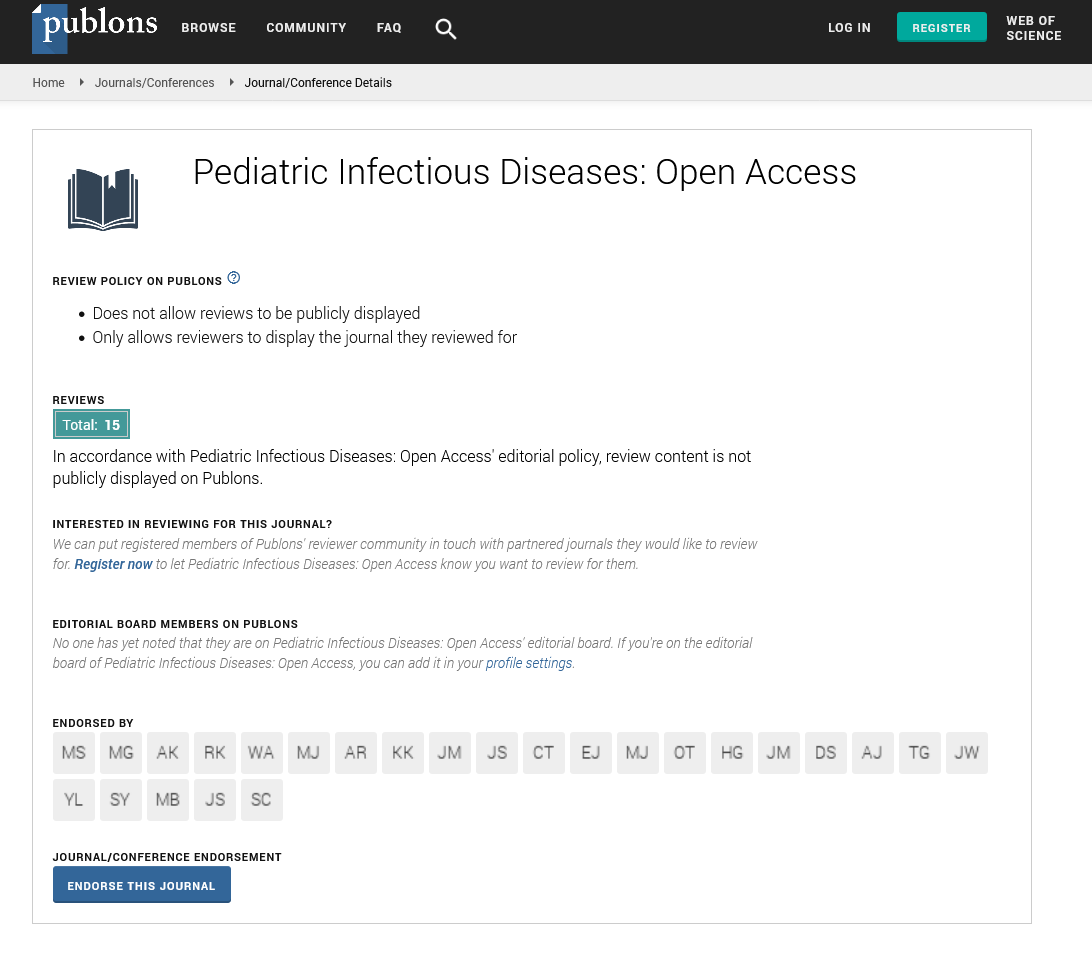Abstract
Clinical Profile of Novel H1N1 Influenza in Children at a Tertiary Care Centre: Pune
Background: With worldwide presence, Novel influenza virus (H1N1) carries great potential for causing a pandemic,there are limited studies about clinical profile of H1N1 in paediatric age group in India hence the present study was undertaken at Aditya Birla Memorial Hospital in Pune.
Methods: This was a prospective observational study, conducted during the time period from 01/03/2015 to 31/05/2016. Patients with influenza-like illness (Category B and C) aged 1 month to 16 yrs were included. Epidemiological, clinical and laboratory data was collected. For each patient one nasal and one throat swab was collected and sent to laboratory for RT-PCR (Real Time Polymerase Chain Reaction). All cases were treated with oral Oseltamivir according to MOHFW (Ministry Of Health and Family Welfare) guidelines. Data was analyzed for patients with positive RT-PCR.
Results: Total 148 patients were enrolled in the study. H1N1 Influenza infection was confirmed on RT-PCR in 24.32% (n=36) patients. Majority of H1N1 infected patients (66.66%; n=24) were between 1-6 yrs and 22.22% were more than 6 yrs with mean age of 5.2 yrs. Male: Female ratio was 1.57:1. History of positive contact was obtained in 22.22% (n=8). In spite of earlier vaccination for H1N1 22.22% (n=8) suffered from infection.Common symptoms were fever (100%), cough (88.88%), rhinorrhoea (83.33%), vomitings (22.22%) and loose stools (22.22%). Normal chest X-ray was found in 38.88% of them, patchy consolidation in 33.33%, prominent broncho-vascular markings in 22.22% and pleural effusion in 5.55%. Fever lasted for more than 7 days in 33.33%. Secondary bacterial infection was found in 16.66% and 5.55% had evidence of myositis. 5.55% had evidence of encephalitis. Mechanical ventilation was required in 11% during the course of treatment. Mean duration of hospitalization was 4.1 days. One deaths occurred.
Author(s):
Krishna Chaitanya, Archana Addanki, Nisha Deshpande and Rajendra Karambelkar
Abstract | Full-Text | PDF
Share this

Google scholar citation report
Citations : 230
Pediatric Infectious Diseases: Open Access received 230 citations as per google scholar report
Pediatric Infectious Diseases: Open Access peer review process verified at publons
Abstracted/Indexed in
- Google Scholar
- China National Knowledge Infrastructure (CNKI)
- Cosmos IF
- Secret Search Engine Labs
Open Access Journals
- Aquaculture & Veterinary Science
- Chemistry & Chemical Sciences
- Clinical Sciences
- Engineering
- General Science
- Genetics & Molecular Biology
- Health Care & Nursing
- Immunology & Microbiology
- Materials Science
- Mathematics & Physics
- Medical Sciences
- Neurology & Psychiatry
- Oncology & Cancer Science
- Pharmaceutical Sciences


